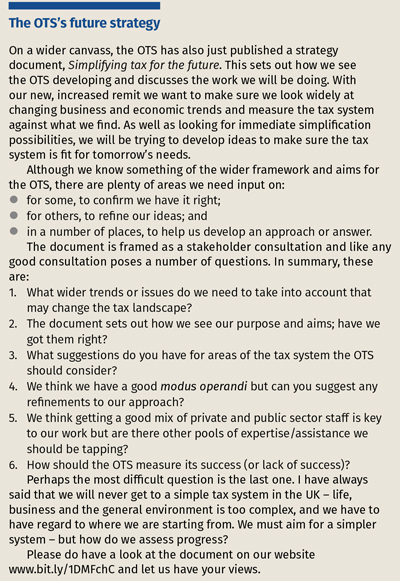The Office of Tax Simplification (OTS) has been asked by ministers to carry out a review of the corporation tax computation. The work will look at the adjustments to get from accounting profit to taxable profit in the context of the current business environment, building on earlier OTS work; in particular, our competitiveness report. As always, the OTS wants views and evidence from businesses and advisers, including on its new strategy document.

The Office of Tax Simplification (OTS) has been asked by ministers to carry out a review of the corporation tax computation. The work will look at the adjustments to get from accounting profit to taxable profit in the context of the current business environment, building on earlier OTS work; in particular, our competitiveness report. As always, the OTS wants views and evidence from businesses and advisers, including on its new strategy document.








